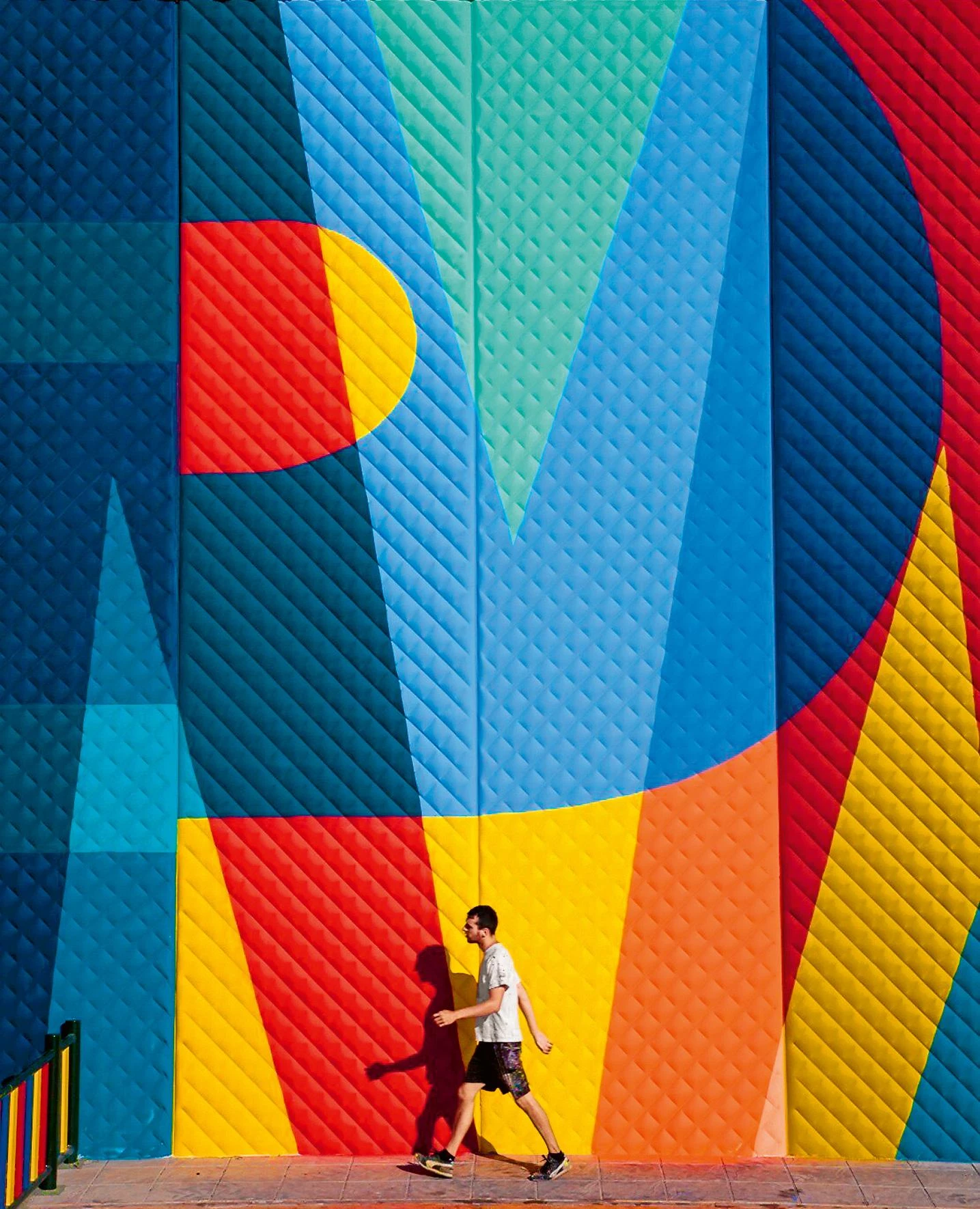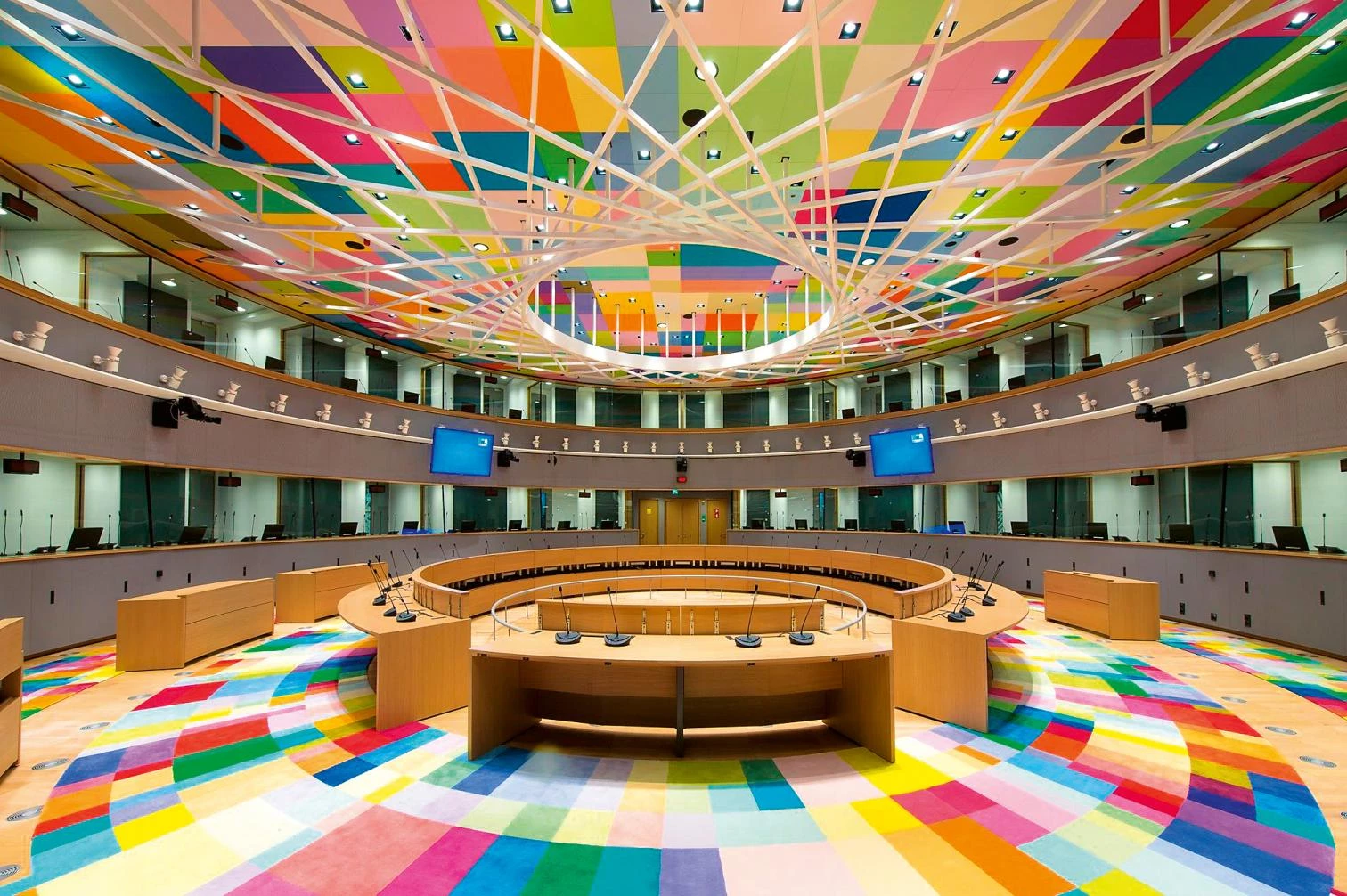
Boa Mistura, Empatía, intervención sobre el polideportivo de la Alhóndiga, Getafe © Cultura Inquieta, 2020
Architecture has a difficult relationship with color. If heroic modernity embraced a clinical, hygienic white, subsequent revisions extended the palette to the natural tones of raw material, but without giving up on the ascetic ideal of chromatic relinquishment. This strict professional discipline – despite episodes like neoplasticism or the interiors of the Jaoul, which compete with those of Kaurismäki or Almodóvar –has not always been well understood by users, who often find colorless construction dull, and have expressed their preferences by tuning their houses, paint pot in hand. A famous case was the immaculate housing block by Siza in Berlin, welcomed by neighbors with a graffiti, Bonjour tristesse, which ended up naming the project, and with bags of paint cast on the facade to leave shiny splashes of color; a different reception from that obtained by the striking polychromy of the Hundertwasser apartments in the same Kreutzberg district.
But color is not always popular among users, and a good example is the residential block raised in Madrid by Ricardo Legorreta, where one of the main complaints were the bright tones that the Mexican architect had learned from Luis Barragán. On other occasions the public appreciates chromatic freedom, in the technological works of Sauerbruch Hutton, in the basic constructions of Anna Heringer, or in projects like the MUSAC in León, where the stained glass windows of the cathedral gave Mansilla and Tuñón the cue to create what is today a favorite spot for wedding photos. Used as an affordable remedy to alleviate the monotony of Kilamba – the city built by China outside Luanda –, to revitalize the urban context of Tirana, or to bring optimism to the favelas in Rio, color can also be polemic when applied on sidewalks to set new civic rules in Barcelona, or to convey empathy by painting the concrete surface of a building by Fisac in Getafe.
Trained in chromatic austerity, we architects feel inevitably closer to the Henry Ford who offered “any color car as long as it is black” or to the Jean Nouvel who defends “theoretical gray.” But around us unfurls an explosion of color that illuminates with a rainbow the steel supports of Terminal 4 at Barajas Airport or gives a kindergarten air to the European Council conference room. Puzzled as once were the lovers of classical architecture when Hittorf unveiled the violent polychromy of the Greek, we go over the writings on color theory from Goethe to Owen Jones, the classes of Itten and Albers at the Bauhaus or the projects of Bruno Taut, and promise to heal from our chromatic anorexia. We know well that color is not guilty, and yet we feel relieved when we see the painter Pérez Villalta abandon flashy colors and go for the sandy hues of Piero’s frescoes. Guilt is not in the color, but in the eye.

Sala del Consejo Europeo, Bruselas





